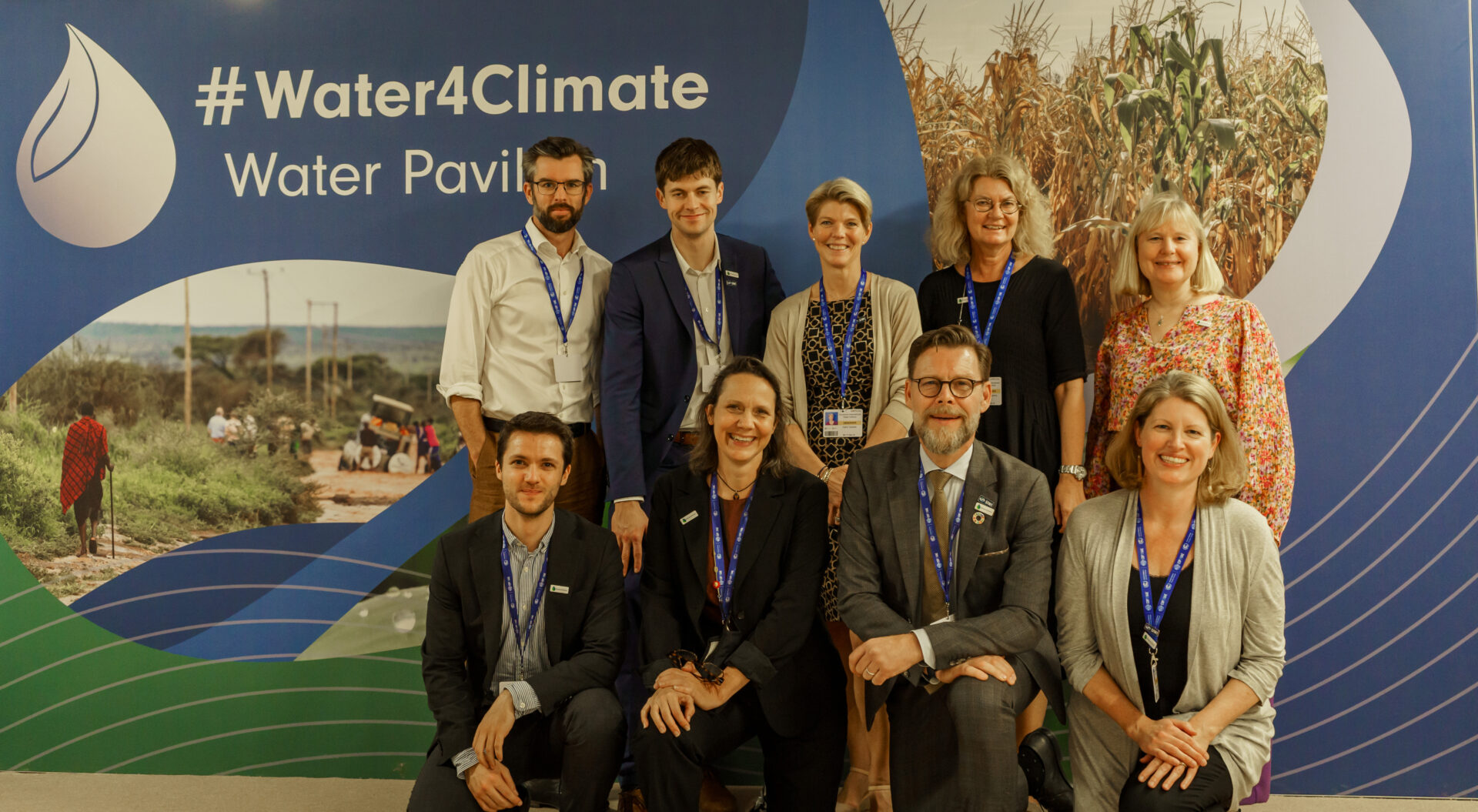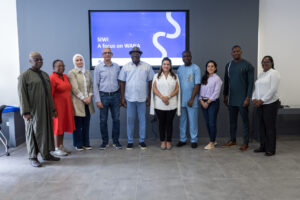COP28: Water rises up in the climate agenda
“We accomplished what we set out to do.”
From early on the auspices for water and climate at COP28 had been positive as the Presidency once again elevated water’s critical role for climate action: “The UAE Presidency did a lot to continue the work that Egypt initiated at COP27,” says Gaillard-Picher. This became very visible during the World Climate Action Summit Presidency Session on Water that assembled heads of government and state around water action.
More impetus came from the COP28 Presidency’s Food, Agriculture, and Water Day on 10 December which saw a range of new partnerships and initiatives, a boost to existing ones, as well as some financial commitments towards addressing water-related challenges from the UAE, the United Kingdom, as well as multilateral development banks.
The climate crisis is a water crisis, and climate action will ultimately be in vain unless we prioritize a water secure world. United, the water community has gathered momentum and needs to continue to act to help climate and water action succeed.
One voice for water
Another positive sign for water and climate at COP28 was that the water community had gathered in a way that was more strategic and outward looking than before. The Water for Climate Pavilion offered key tools for advocacy and knowledge dissemination as the collective united 63 partners – more than ever before. Some 23 curators organized nine thematic days with 65 sessions and four cross-pavilion events, among others with the Oceans Pavilion. As a founder of the Pavilion, SIWI coordinated the project and led the steering committee on the road to COP28.
Prior to the conference partners within the Water for Climate Pavilion had developed common messaging housed within a knowledge hub. During the conference, the strategy was to be outward-looking: “It was a very collaborative effort this year and this is what makes it effective. Not everyone has to be everywhere all the time. Instead, we help each other to focus on what we are good at and share the responsibilities.”
Partners brought water messages throughout the conference spaces and events, even to negotiators to speak with one voice for water. Around 150 water-related events took place outside of the Water for Climate Pavilion, more than twice as many as in the Pavilion programming itself. “I have the impression that there were far more water discussions happening all over COP compared to the past. I think as the water community we met and surpassed that target,” says Gaillard-Picher.
It was a very collaborative effort this year and this is what makes it effective.
Water on the climate agenda
The negotiation process “was an emotional rollercoaster.” Over the two-week conference, Gaillard-Picher’s reactions to the outcome drafts ranged from “wildly excited to disappointed.” Each update from the negotiations led to new waves of trying to leverage relationships with governments, including the partners of the Water for Climate Pavilion. In the end, the Global Stocktake (GST) as well as the Global Goal on Adaptation (GGA) outcomes both featured water.
The GST assessed overall progress in climate action from the last seven years. While acknowledging progress, it signaled that we are widely off target to reach 1.5°C temperature rise. Important for water and climate is that the outcome of the GST recognizes the critical role of water systems and water related ecosystems in its preamble. In doing so, the GST followed the precedent set by the COP27 cover decision which acknowledged the role of freshwater for climate action for the very first time.
Important for water and climate is that the outcome of the GST (Global Stocktake) recognizes the critical role of water systems and water related ecosystems in its preamble.
The Global Goal on Adaptation
A highlight of the conference came with the adoption of the GGA framework, eight years after the decision to establish a global adaptation target. The GGA is intended to help guide climate adaptation around the world to strengthen resilience and reduce vulnerability to climate change. In the end, water is listed as the first thematic target of the framework. A historic moment, as Gaillard-Picher explains: “The language in the GGA is not obligatory, but it sends a strong signal. Water is the very first thing countries should look at when it comes to adaptation. It is recognized as being at the heart of the GGA and climate adaptation.”
Together with Sanitation and Water for All (SWA), SIWI supported a submission ahead of COP28, which outlined the importance of climate resilient water supply and sanitation targets. Dr. Alejandro Jiménez, Director of the Water and Sanitation Department at SIWI, was part of that process. He notes that “we see the adoption of the GGA Framework as a transformative milestone that will provide the world with specific, measurable targets and guidelines for adaptation planning and finance.”
“We are particularly pleased to see that the GGA encourages the use of human rights-based approaches and has a focus towards the most vulnerable and marginalized – including girls and women, people with disabilities, indigenous groups, among others. We also commend that the GGA puts emphasis on early warning systems and disaster risk reduction, ecosystem protection, including the use of nature-based solutions and the protection of inland water, mountain, marine and coastal ecosystems,” outlines Jiménez.
“...we see the adoption of the GGA (Global Goal on Adaptation) Framework as a transformative milestone that will provide the world with specific, measurable targets and guidelines for adaptation planning and finance.”
What comes next?
The GGA marks an opportunity to reduce vulnerability to the climate crisis if adaptation finance is scaled up and adaptation targets are implemented. “SIWI stands ready to support the implementation of the GGA in all aspects related to water,” emphasizes Jiménez.
SIWI has long-standing experience in supporting countries on climate resilient water and sanitation programming. As a next step, SIWI is supporting through the SWA Climate Task Team, the development of a sector definition of climate resilient water supply and sanitation services, as well as other water-related targets. This will form the basis of another submission to the GGA work programme, that is now focused on the development of metrics and indicators to track progress.
Based on the conclusions of the GST, countries will now seek to enhance their Nationally Determined Contributions to be more ambitious and better suited to their individual contexts. These will be finalized at COP30 in two years.
In this process, holistic management across systems as well as integrated approaches such as Source to Sea management will be critical to overcome silos and tackle multiple obstacles at the same time, while watching out for unintended consequences. For example, the transition away from fossil fuels will mean exponential increases in renewable energy some of which will heavily depend on water for their production. Therefore, energy plans must acknowledge and anticipate their water demands and availability, compounded with other uses, especially in water-scarce areas, in order to be truly sustainable.
The climate crisis is a water crisis, and climate action will ultimately be in vain unless we prioritize a water secure world. United, the water community has gathered momentum and needs to continue to act to help climate and water action succeed.









